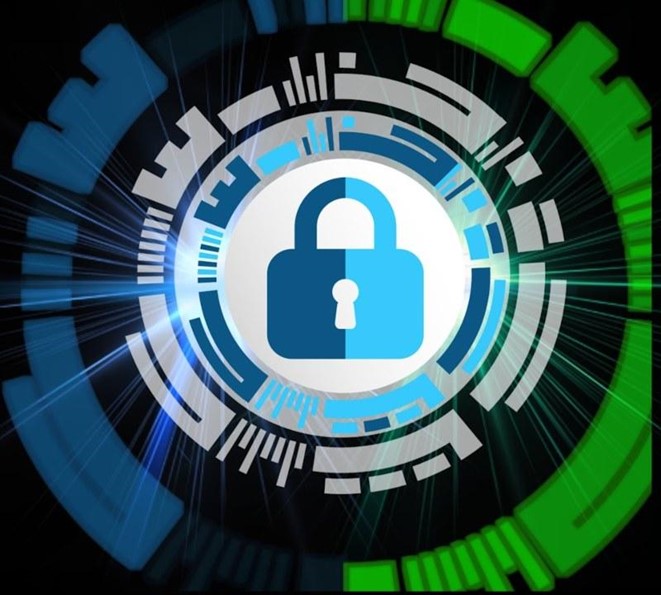Cyber resilience is an approach that extends an organization’s traditional cybersecurity strategies, adding resilience and evolution capabilities to those of prevention and recovery.
Cyber Resilience: What It Is
Cyber resilience is a key concept in the cybersecurity industry that everyone is talking about now.
But what is cyber resilience and why is it so important?
Cyber resilience is the ability of a system or organization to anticipate, resist, recover and evolve in the event of cyberattacks or adverse conditions that prevent normal functioning in the digital environment.
Cyber resilience is a concept that goes beyond the traditional approach to cybersecurity, which is focused on protecting systems, networks, and data from attacks. It involves being prepared to nullify or minimize damage, maintaining activity during any cyberattack or incident, and learning to strengthen.
Cyber resilience is crucial for organizations because traditional cybersecurity measures are insufficient to ensure data security, proper infrastructure operation, and business continuity. Any organization must be able to prevent and contain attacks, respond appropriately, and recover as quickly as possible.
A well-implemented cyber resilience strategy helps protect a company through four pillars:
- Anticipation: locating vulnerabilities and threats to nullify them or knowing them to be prepared when used.
- Resistance: resist attacks and minimize damage, thanks to anticipation.
- Recovery: recover as soon as possible, maintaining activity at all times.
- Evolution: continuously improving the capabilities to prevent and overcome attacks.
Cyber resilience involves having the most evolved and appropriate tools, solutions, and systems to protect against cyber threats. It also requires adapting corporate processes to this approach and properly training people.
This includes implementing a continuous vulnerability location strategy, incident response and recovery plans, regular security testing, and a trained and ready cybersecurity team.

Differences Between Cybersecurity and Cyber Resilience
Cybersecurity and cyber resilience are two fundamental and complementary concepts in the field of information security, but they have some significant differences from the outset.
Cybersecurity focuses on prevention and protection, while cyber resilience focuses on adaptation and evolution. Cybersecurity is the prerequisite for cyber resilience, which thus emerges as an expansion of the scope of the concept of cybersecurity.
Cybersecurity focuses on preventing attacks and using technologies and practices to protect a company’s digital assets. It involves keeping systems up to date, training employees in best practices, and investing in appropriate solutions and technologies to locate vulnerabilities and prevent attacks before they occur or minimize the damage caused.
Instead, cyber resilience is built so that not all cyberattacks can be prevented and focuses on an organization’s ability to adapt and learn from them. Cyber resilience goes beyond the ability to recover from an attack; it also involves the ability to continue operating during an attack and minimize its impact on business operations.
To learn more about cybersecurity, access our publication→ The 5 cybersecurity trends you should know..
Why is cyber resilience important for companies?
Today, cyber resilience has become an essential component of business sustainability in the short and medium term, thanks to the benefits it brings:
Increased competitive advantage
Cyber resilience improves customer and partner trust, strengthening the company’s reputation. In addition, a cyber-resilient company can innovate and adapt quickly to market changes, seizing digital opportunities securely.
Cyber resilience is a long-lasting competitive advantage sustained over time and adjusts to the constant changes in the cyber threat landscape.
Reduction of financial losses
Cyber resilience helps businesses minimize the financial losses associated with cyberattacks. By effectively resisting attacks, businesses avoid significant costs related to disruption of operations, data loss, and fines for regulatory non-compliance.
In addition, rapid recovery from an attack reduces downtime, limiting revenue losses while lowering long-term costs by preventing damage from customer churn. In this way, while the average cost of a successful cyberattack increases every year, cyber-resilient companies manage to reduce this amount significantly.
Compliance with legal and regulatory requirements
Cyber resilience helps organizations comply with national and international cybersecurity regulations, such as the Networks and Information Systems Directive (NIS) or the General Data Protection Regulation (GDPR).
Organizations implementing cyber resilience practices can demonstrate to regulators that they are proactively protecting critical data and systems. This helps avoid fines and penalties that result from regulatory non-compliance.
Reputation Protection
Cyber resilience plays a crucial role in protecting companies’ reputations. In a digitized market, a single security incident can cause significant damage to a company’s reputation and lead to a loss of trust from customers and partners.
By being cyber-resilient, companies demonstrate their commitment to security, strengthening their reputation and reliability. In addition, by minimizing the impact of cyberattacks, cyber resilience prevents negative publicity and helps maintain stakeholder trust.
Characteristics of a cyber-resilient company
Cyber-resilient companies share a series of characteristics associated with the ability to adapt and learn in the face of cyberattacks:
Dynamic positioning
Dynamic positioning allows companies to adapt to new threats, learn from security incidents, and continuously improve their defenses.
It involves anticipating, resisting, and recovering from cyberattacks and other critical events.
In an ever-evolving digital environment, cyber threats change and adapt quickly. Therefore, enterprises must be able to adjust their security posture dynamically to meet these challenges.
This is achieved through comprehensive security strategies, continuous monitoring, and personnel training. Cyber-resilient businesses must also be able to adapt to new cybercriminal tactics and keep up with the latest technologies and security standards.
In addition, they must have adequate contingency and recovery plans to minimize damage and maintain customer trust.
Analytical monitoring
Cyber-resilient companies know the need to
detect and respond to threats promptly.
Analytical monitoring allows these companies to collect, process, and analyze large volumes of security data in real-time. This provides complete visibility into different attack surfaces and enables early detection of vulnerabilities and suspicious or anomalous activity.
This visibility is achieved by implementing tools and systems to monitor potential threats and vulnerabilities. Analytical monitoring is crucial to identifying and responding to cyber incidents efficiently.
In addition, it allows cyber-resilient companies to anticipate and prevent attacks, minimize the impact of incidents, and protect their critical assets. Analytical monitoring also helps improve responsiveness and recovery.
Continuous analytical monitoring of different attack surfaces offers additional benefits that go beyond simple incident detection:
- Improved detection capability: This maximizes the ability to detect potential adverse conditions and reveal their extent, enabling a more effective and faster response to incidents.
- Attack anticipation: Helps anticipate and prevent cyberattacks, significantly reducing financial and reputational losses.
- Improved system security: In addition to helping respond to an attack and survive quickly, it also serves to develop and design protection strategies.
- Reduced chances of a cyberattack: By identifying and containing potential threats before they materialize, you can reduce your chances of falling victim to one.
- Improved responsiveness: Improves the ability to respond to incidents, allowing for faster and more effective recovery.
- Improved collaboration: Facilitates collaboration between different departments and with third parties, which is essential for an effective cyber resilience strategy.

Cybersecurity Practices and Policies
Strengthened cybersecurity practices and policies are a critical characteristic of a cyber-resilient enterprise. These policies define the rules and procedures that the organization follows to protect against cyber threats and respond effectively when security incidents occur.
This involves implementing robust security measures, such as complex passwords, multi-factor authentication, and regularly updating software and systems.
In addition, the organization should have clear policies on device and network use and ongoing training for employees on cybersecurity best practices. These measures help prevent and mitigate cyberattacks, reducing the organization’s vulnerability. Likewise, an organizational culture that prioritizes cybersecurity is crucial, where all company members are committed to following the established protocols.
Comprehensive protection measures
These measures encompass a variety of strategies and technologies designed and combined to protect all aspects of a company’s digital infrastructure and control different attack surfaces.
They encompass monitoring and analytics solutions to detect and respond to cyber incidents quickly. They also include physical security, such as controlling access to data centers, and digital security, such as firewalls, intrusion detection systems, and antivirus software.
In addition, they include data protection, such as encryption and key management, and application security, such as code review and penetration testing.
Finally, comprehensive protection measures involve incident preparedness, such as incident response planning and disaster recovery.
Find out how Kartos by Enthec can strengthen your organization’s cyber resilience.
Our Kartos Corporate Threat Watchbots Cyber Surveillance platform makes it
easy for your organization to continuously monitor the external attack surface.
Thanks to the analytical capacity of its self-developed Artificial Intelligence and machine learning, Kartos reinforces organizations’ cyber resilience by providing the information they need to deal with a cyberattack.
Contact us and learn about our solutions to make your company a cyber-resilient organization.


